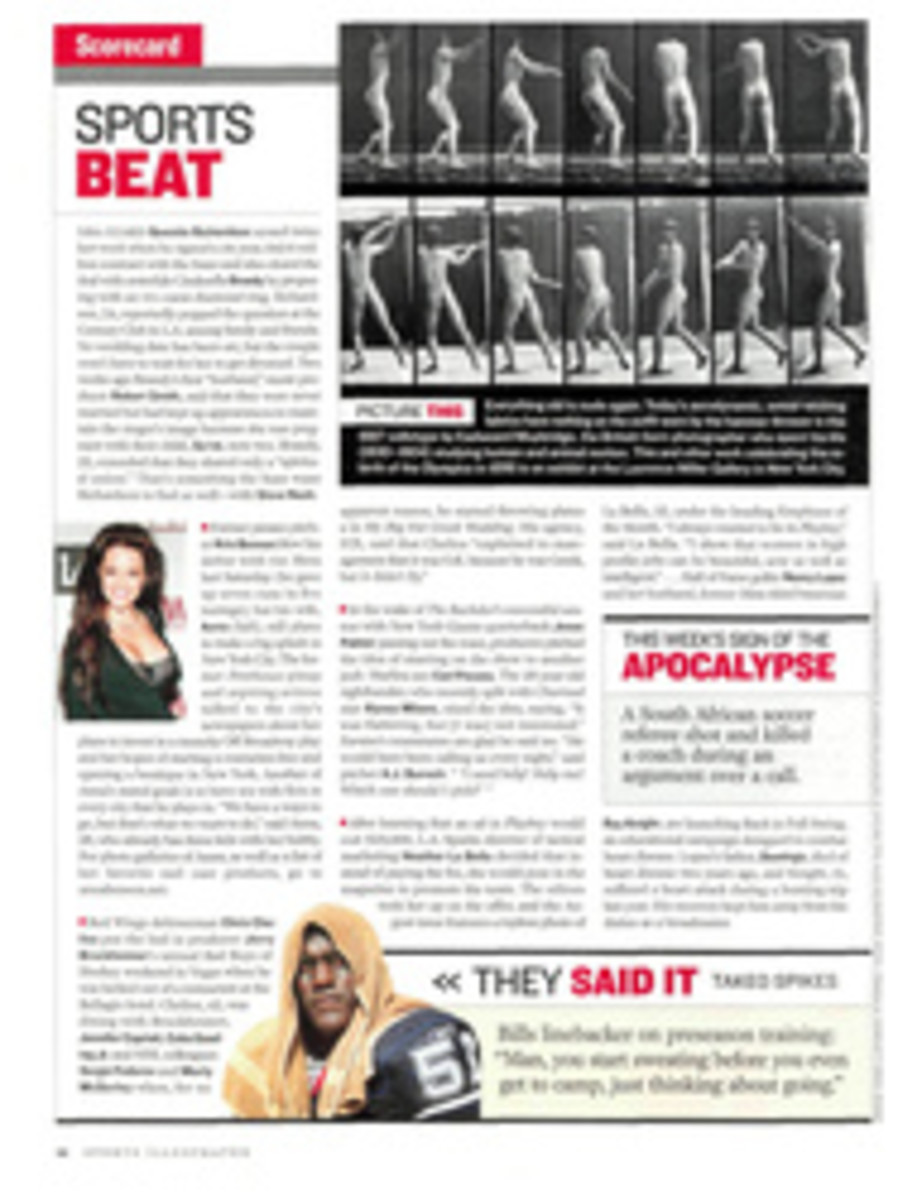
Dire Straits You thought Shinnecock Hills was over the top? Wait until you get a look at Whistling Straits, a train wreck in the making
Most people, even if they're die-hard golf fans, have never heard
of Kerry Haigh, and if things go well at next week's PGA
Championship at Whistling Straits in Kohler, Wis., they never
will. ¶ But if things go wrong, Haigh will share the fate of
Walter Driver, the championship committee chairman of the USGA
and the man held accountable for the nearly unplayable condition
of Shinnecock Hills during the final round of this summer's U.S.
Open. ¶ As the PGA of America's setup man, Haigh is charged with
the care and feeding of what could be the most volatile major
venue ever. At 7,597 yards and with three par-4s of at least 500
yards each, Whistling Straits is the longest course in Grand
Slam history. Littering this monster are more than 1,400
bunkers, some of them mere slivers. The landing areas on a
half-dozen holes are only 20 yards wide, and lining the
fairways are dense fields of three-foot-high fescue. Add a
little wind, and the players will wish they were back on Long
Island. "If it blows, they'll need more spotters than on any
course since Carnoustie," says Stuart Appleby, one of seven
pros (including Rich Beem, Chris DiMarco and Vijay Singh) who
visited the course on a Tour-sponsored meet-and-greet on June
28. "It's going to be very easy to lose a ball in the wind and
then lose it literally."
August isn't Whistling Straits's cruelest month--it's usually the
mildest, with average winds of 10 to 15 mph--but a third of the
time the course, hard by Lake Michigan, experiences winds of up
to 30 mph. That's enough to send even the most precisely struck
tee shots sailing into the tall grass.
If it seems odd that the PGA would select such a potentially
troublesome site, consider this: The width of the fairways and
the length of the fescue were the PGA's own idea. Pete Dye's
original layout was a forgiving, wide-open resort course with
some fairways 60 yards wide. Thinking that it looked too easy,
the PGA ordered the alterations to stiffen the challenge.
When Whistling Straits opened in 1998, its most eye-catching
characteristic was its wild dunesland look. Dye's patron,
bathroom-fixture magnate Herb Kohler, had requested a waterfront
links on the order of Ireland's Portmarnock and Ballybunion or
Scotland's Cruden Bay. To comply, Dye trucked in 13,126
truckloads of sand and dumped them on the bluffs overlooking the
lake.
During grow-in, Dye invited PGA president Jim Awtrey for a visit,
and it was love at first sight. Awtrey's only reservation was the
fairways, which then covered 44 acres. He rightly recognized that
over four potentially windless August days, the best players in
the world, with so much elbow room, might turn the PGA
Championship into the Phoenix Open. Eighteen months after opening
day, Whistling Straits was awarded the '04 PGA--on the condition
that the fairway acreage be decreased by half. It was a strange
arrangement, like proposing marriage on the condition that your
beloved undergoes plastic surgery.
When those seven pros visited in June, conditions were calm.
Still, they were terrified. Beem called the course "bizarre" and
the narrow landing areas "inane." A disbelieving Singh told
confidants that he hit three-iron approaches into four of the
par-4s. The players were especially worked up about the number of
blind tee shots, which, depending on the placement of the tees,
may number five. "There are some holes," says DiMarco, "where
you're standing there thinking, Where the heck is the fairway?"
Dye, visiting the same day as the pros, was also up in arms.
"What they did with the fescue had me yelling and screaming," he
says, "because in some places they made it too tight."
Maybe those comments got to Haigh. Or maybe he had a late-night
visitation from Driver, the ghost of major-championship disasters
past. Whatever the reason, the 45-year-old Haigh, a native of
Yorkshire, England, with 15 years of experience with the PGA,
mandated two cuts to the fescue over the next two weeks.
Sizable portions of the secondary rough (the three-foot-high
stuff) near the fairway landing areas have now been turned into
primary rough (a still-formidable four inches tall), adding as
much as six feet to either side on some holes. The landing areas
haven't gotten any wider, but now, at least, players will be able
to advance a marginally foul ball toward the green.
Once play begins, Haigh's most formidable challenge will be
dealing with the wind. "We're planning to err on the side of
caution," he says. "We're not afraid to use alternate tees"--that
is, shorten holes that figure to play into the wind.
The job may not be that easy. Whistling Straits runs along the
lake in a figure-eight pattern, with an equal number of holes
upwind and downwind. "The biggest challenge we could have," says
Haigh, "is if the wind swaps over." What he means is that the
prevailing southeasterlies, for instance, could yield to
secondary winds from more or less the opposite direction. If that
happened in the middle of the day, it would make the use of
alternative tees counterproductive. Or say the wind lies down
completely, allowing contestants playing from shortened tees to
tear up the course. Haigh's worst nightmare is that the winner is
simply the guy who lucks out with his starting times.
Even if Haigh gets everything right, Dye's design may still put a
noose around the PGA's neck. His two closing holes are so
unconventional that bogey-bogey finishes will not be uncommon.
The 223-yard par-3 17th doesn't have an island green like the TPC
at Sawgrass, but in some ways it is more fearsome. Along its left
side--the typical miss for jittery pros--is a 15-foot drop into a
minefield of minibunkers and hay. Remember that playoff at the
2001 Buick Invitational when Phil Mickelson hit a tee shot on the
17th hole at Torrey Pines into a gorge and begged the marshals
not to look for the ball so he wouldn't have to play it? Expect
the same scenario, on continuous spool, at Whistling Straits.
The green at the 500-yard par-4 18th is shaped like a four-leaf
clover, but it plays more like a crucifix. Each arm is about 12
paces across and separated from its neighbor by a steep,
fescue-covered decline. Never will you see more players chipping
from one part of a green to another. Forget the roars of the
crowd. The loudest sound at the end of the PGA may be a crashing
leader board.
Sound scary? Get used to it. The USGA is bringing the U.S. Senior
Open to Whistling Straits in 2007, and the smart money says the
2012 U.S. Open is in the bag. If by some miracle there's no
Shinnecock-like bloodbath next week, there will be one then.
COLOR PHOTO: PHOTOGRAPH BY FRED VUICH BIG BULLY Length (7,597 yards), sand (1,400 bunkers) and wind(often 30 mph) could make the Straits--with such typical holes asthe 181-yard, par-3 3rd--the toughest major venue ever.

